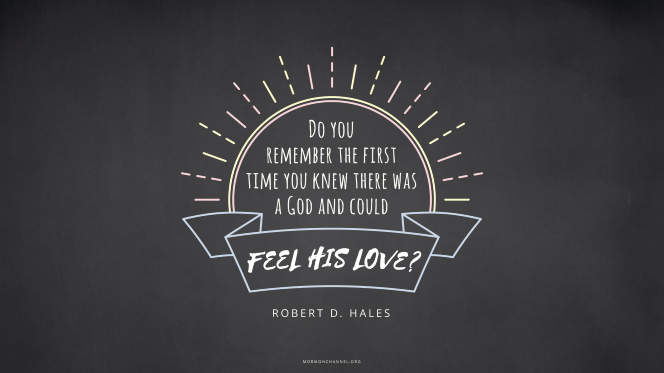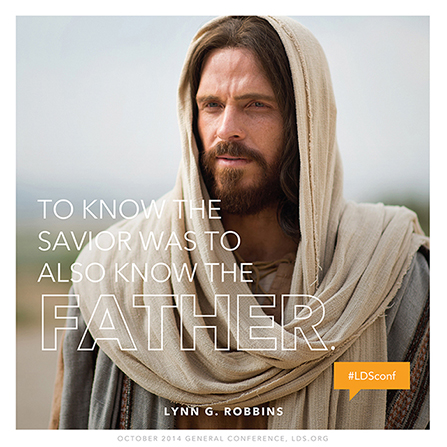Post # 15 – The Pet Scan
Dear Family and Friends,
I am sorry about taking so long to get my posts published, sometimes I have them written and ready to post -- and then life happens. one thing or another at work or home or at church and I get distracted. But here lately I have been resting a lot to recover from my latest surgery. It seems like all I do is physical therapy -- then I rest! I work for half a day -- then I rest! I do my exercises -- then I rest!
I try to remember that I did just have major surgery and it takes time for my body to heal and with cancer, it takes a bit longer to heal that if I did not have the cancer at all, but it is what it is -- so like everyone else, I pray and ask my Heavenly Father for the strength that I need to make it through each day and I do the best that I can to be a good example to all those that are around me:)
 I have children around me all day - every day, which I am grateful for, they help me stay positive about life. After all, the children are our future. Whatever we teach them will stay with them throughout their lives, whether it is something positive or negative that we teach them. And oft times they are learning even when we are not intentionally teaching them -- they are still learning and they learn so much from our example. If we are negative and depressed about things in life that is what they will learn,but if we are positive and excited about things in life then they will be as well:)
I have children around me all day - every day, which I am grateful for, they help me stay positive about life. After all, the children are our future. Whatever we teach them will stay with them throughout their lives, whether it is something positive or negative that we teach them. And oft times they are learning even when we are not intentionally teaching them -- they are still learning and they learn so much from our example. If we are negative and depressed about things in life that is what they will learn,but if we are positive and excited about things in life then they will be as well:)
So, remember to be the best example that you can be for those around you, especially if those around you are children!! They are always watching you, they are always learning from you, good or bad -- they are always learning, so let's do some intentional teaching shall we?

In this post we will learn about the PET scan - This test is a lot like the MRI and CT scans in that they are all in a tunnel-like machine that is very hard for people who are claustrophobic, but with the help of Priesthood blessings and a lot of prayers they are do-able😊

I try to remember that I did just have major surgery and it takes time for my body to heal and with cancer, it takes a bit longer to heal that if I did not have the cancer at all, but it is what it is -- so like everyone else, I pray and ask my Heavenly Father for the strength that I need to make it through each day and I do the best that I can to be a good example to all those that are around me:)
 I have children around me all day - every day, which I am grateful for, they help me stay positive about life. After all, the children are our future. Whatever we teach them will stay with them throughout their lives, whether it is something positive or negative that we teach them. And oft times they are learning even when we are not intentionally teaching them -- they are still learning and they learn so much from our example. If we are negative and depressed about things in life that is what they will learn,but if we are positive and excited about things in life then they will be as well:)
I have children around me all day - every day, which I am grateful for, they help me stay positive about life. After all, the children are our future. Whatever we teach them will stay with them throughout their lives, whether it is something positive or negative that we teach them. And oft times they are learning even when we are not intentionally teaching them -- they are still learning and they learn so much from our example. If we are negative and depressed about things in life that is what they will learn,but if we are positive and excited about things in life then they will be as well:) So, remember to be the best example that you can be for those around you, especially if those around you are children!! They are always watching you, they are always learning from you, good or bad -- they are always learning, so let's do some intentional teaching shall we?

In this post we will learn about the PET scan - This test is a lot like the MRI and CT scans in that they are all in a tunnel-like machine that is very hard for people who are claustrophobic, but with the help of Priesthood blessings and a lot of prayers they are do-able😊
Positron emission tomography scan (PET scan)
Positron emission tomography (PET) is a nuclear imaging technique that creates detailed, computerized pictures of organs and tissues inside the body.
A PET scan reveals how the body is functioning and uncovers areas of abnormal metabolic activity.
During a PET scan, the patient is first injected with a glucose (sugar) solution that contains a very small amount of radioactive material. The substance is absorbed by the particular organs or tissues being examined. The patient rests on a table and slides into a large tunnel-shaped scanner. The PET scanner is then able to "see" damaged or cancerous cells where the glucose is being taken up (cancer cells often use more glucose than normal cells) and the rate at which the tumor is using the glucose (which can help determine the tumor grade). The procedure is painless and varies in length, depending on the part of the body that is being evaluated.
A PET scan can be used to detect cancerous tissues and cells in the body that may not always be found through computed tomography (CT) or magnetic resonance imaging (MRI).

PET scan: PET scans use a kind of sugar that can be seen inside your
body with a special camera. If there is cancer, this sugar shows up as “hot
spots” where the cancer is found. This test can help show if the cancer has
spread.
https://www.cancercenter.com/treatments/pet-ct-scan/
https://www.cancercenter.com/treatments/pet-ct-scan/
You can find more articles at the addresses below that are pretty specific in explaining about the PET Scan. It's worth reading if you want more information.
.
What is Positron Emission Tomography – Computed Tomography (PET/CT) Scanning?

What is Positron Emission Tomography – Computed Tomography (PET/CT) Scanning?
Positron
emission tomography, also called PET imaging or a PET scan, is a type of
nuclear medicine imaging.
Nuclear
medicine is a branch of medical imaging that uses small amounts of radioactive material
to diagnose and determine the severity of or treat a variety of diseases,
including many types of cancers, heart disease, gastrointestinal, endocrine,
neurological disorders and other abnormalities within the body. Because nuclear
medicine procedures are able to pinpoint molecular activity within the body,
they offer the potential to identify disease in its earliest stages as well as
a patient’s immediate response to therapeutic interventions.
Nuclear
medicine imaging procedures are noninvasive and, with the exception of
intravenous injections, are usually painless medical tests that help physicians
diagnose and evaluate medical conditions. These imaging scans use radioactive
materials calledradiopharmaceuticals or radiotracers.
Depending
on the type of nuclear medicine exam, the radiotracer is either injected into
the body, swallowed or inhaled as a gas and eventually accumulates in the organ
or area of the body being examined. Radioactive emissions from the radiotracer
are detected by a special camera or imaging device that produces pictures and
provides molecular information.


In many
centers, nuclear medicine images can be superimposed with computed tomography (CT)
or magnetic resonance imaging(MRI)
to produce special views, a practice known as image fusion or co-registration.
These views allow the information from two different exams to be correlated and
interpreted on one image, leading to more precise information and accurate
diagnoses. In addition, manufacturers are now making single photon emission
computed tomography/computed tomography (SPECT/CT) and positron emission
tomography/computed tomography (PET/CT) units that are able to perform both
imaging exams at the same time. An emerging imaging technology, but not readily
available at this time is PET/MRI.
A PET
scan measures important body functions, such as blood flow, oxygen use, and
sugar (glucose) metabolism, to help doctors evaluate how well
organs and tissues are functioning.
CT
imaging uses special x-ray equipment, and in some cases a contrast material, to produce multiple images
or pictures of the inside of the body. These images can then be interpreted by
a radiologist on a computer monitor. CT imaging provides excellent anatomic
information.
Today,
almost all PET scans are performed on instruments that are combined PET and CT
scanners. The combined PET/CT scans provide images that pinpoint the anatomic
location of abnormal metabolic activity within the body. The combined scans
have been shown to provide more accurate diagnoses than the two scans performed
separately.


What
are some common uses of the procedure?
PET and
PET/CT scans are performed to:
- detect
cancer.
- determine
whether a cancer has spread in the body.
- assess
the effectiveness of a treatment plan, such as cancer therapy.
- determine
if a cancer has returned after treatment.
- determine
blood flow to the heart muscle.
- determine
the effects of a heart attack, or myocardial
infarction, on areas of the heart.
- identify
areas of the heart muscle that would benefit from a procedure such
as angioplasty or coronary
artery bypass surgery (in combination with a myocardial
perfusion scan).
- evaluate
brain abnormalities, such as tumors, memory disorders, seizures and other
central nervous system disorders.
- map
normal human brain and heart function.
·
What is a PET/CT scan?
·
This advanced nuclear imaging technique combines positron emission
tomography (PET) and computed tomography (CT) into one machine. A PET/CT scan
reveals information about both the structure and function of cells and tissues
in the body during a single imaging session.
·
During a PET/CT scan, the patient is first injected with a glucose
(sugar) solution that contains a very small amount of radioactive material. The
substance is absorbed by the particular organs or tissues being examined. The
patient rests on a table and slides into a large tunnel-shaped scanner. The
PET/CT scanner is then able to "see" damaged or cancerous cells
where the glucose is being taken up (cancer cells often use more glucose than
normal cells) and the rate at which the tumor is using the glucose
(which may help determine the tumor grade). The procedure is painless and
varies in length, depending on the part of the body that is being evaluated.
·
By combining information about the body's anatomy and metabolic
function, a PET/CT scan provides a more detailed picture of cancerous tissues
than either test does alone. The images are captured in a single scan, which
provides a high level of accuracy.
·
Most oncologists will perform a CT scan and/or a bone scan prior
to ordering a PET/CT scan.
A CT scan is a series
of xrays that builds up a 3-dimensional picture of inside your body. CT stands
for Computerised Tomography. You will need to lie down on a couch which moves
through a tunnel. This is a painless procedure and usually takes about 30mins.
You may need to take a drink or be injected with dye. This allows your doctors
to see areas of your body more clearly. The dye might make you feel hot but
this will pass.
An MRI scan uses magnetic fields and not xrays to build up a
series of cross sectional pictures of inside your body. MRI stands for Magnetic
Resonance Imaging. Again you will have to lie on a couch, this time inside a
metal cyclinder. An MRI scan is very noisy and you will be given earplugs or
headphones. Some patients find an MRI claustrophobic. If you are worried about
this discuss it with your doctor. They can prescribe medication to help keep
you calm. You may also be given a drink or injection of dye before an MRI scan.


A PET scan stands for Positron Emisson Tomography. You will be
given a radioactive injection prior to your scan and this will highlight areas
in the body that are abnormal. A PET scan is often used for parts of the body
that other scans don't give enough information about. This scan is also
painless, however it can take up to two hours to perform. Again you will be
required to lie on a couch that moves through a scanner. This scanner contains
sensors that read the signals from the radioactive substance injected into your
body. It is important to be very relaxed prior to a PET scan. Your doctor might
prescribe some medication to help you with this. It is unusual to become
claustrophobic during a PET scan.
All of these scans take pictures of inside the body. Your doctor
will decide which scan is best suited for you. These scans are usually
performed for investigative purposes and are not normally performed on healthy
people.
You will be advised before your scan whether or not you need to
fast. Also the staff in the radiology department will explain whether or not
you are radioactive following your scan. If so it is advisable to avoid contact
with young children and pregnant women for 24 hours.
https://www.cancer.ie/community/diagnosis/ct-scan-mri-scan-and-pet-scan-whats-difference

If you would like more information on these or other tests please check out the website for the American Cancer Society:

No comments:
Post a Comment